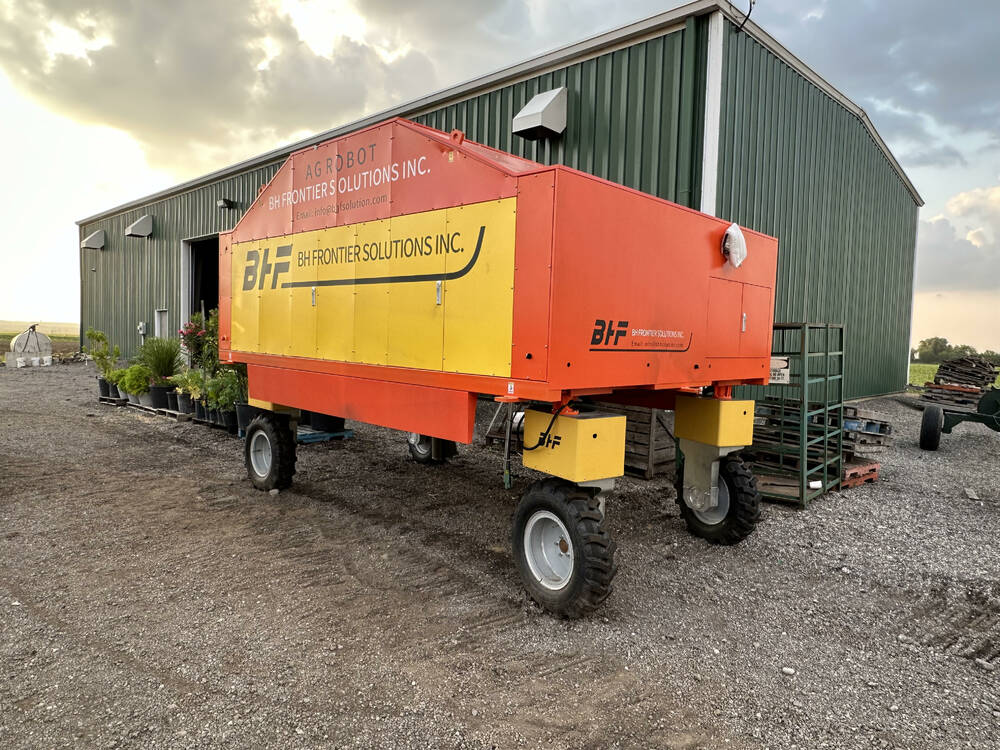New AI-based technologies offer weed control solutions

Herbicides have long made weed control easier, but that’s changing as more and more weeds develop resistance and new invasive species take hold in our soils.
Read Also

Mushrooms a booming business
Ninety per cent of mushrooms grown year-round in Canada are Agaricus (white, button, cremini, portabella), and despite their small stature, mushrooms carry a significant health punch including antioxidants, prebiotic fibre, naturally occuring vitamin D and, for example, a portabella mushroom contains roughly the same amount of potassium as a banana.
Another type of resistance is also growing: the federal government’s willingness to keep products registered for the market, as consumers become increasingly distrustful of crop protection science.
Why it matters: Uncontrolled weed populations impact crop yield and quality, which affect not just farm business profitability but also have the potential to threaten food security.
This is providing opportunities for new approaches to weed control. A Canadian ag tech company is putting a new spark into an old method of weed control by using electricity for weeding. A Swiss company, by comparison, is sticking with spraying weeds but is using high tech visioning equipment to target spray at the weeds instead of all the plants on the field.
Serial tech entrepreneur David Tao, co-founder and CEO of Ontario-based start-up BH Frontier Solutions, had an “a-ha” moment about weeds while visiting a friend in the early days of the COVID-19 pandemic who was a carrot farmer.
“He was complaining about not getting enough labour for weeding and I went to his farm and couldn’t see any crops (because of the weeds),” Tao recalls.
Armed with work experience in electronics companies and a mechanical engineering degree in robotics, he did a bit of research and developed the concept of using high voltage electricity paired with artificial intelligence (AI) to get weeds under control without using herbicides.
And so BH Frontier Solutions was born. Its battery-powered Agrobot is armed with computer vision and a decision-making module that can recognize common vegetable and row crops, which ensures its high powered electrical currents only target weeds. The current prototype can cover five to 10 acres per hour, regardless of how dense the weeds are, said Tao.
“It identifies crops and anything else is a weed. The other benefit is that if farmers do use spray application, our AI lets us do precision application of inputs,” he adds. “We see tremendous use cases for both organic and conventional farms; essentially anyone with herbicide resistant weeds, especially vegetable farms. Our method reduces labour and input costs for farmers.”
According to Tao, various farmers, mostly vegetable growers in Ontario, have expressed interest in the company’s working prototype. A grant from the Canadian Agri-Food Automation and Intelligence Network (CAAIN) is supporting the company’s production scale-up with hopes of being ready for market entry in 2025. They’ve also received support from Venture Lab in York Region.
Halfway around the world, Swiss agtech innovator Ecorobotix is taking a different approach. It also uses a visioning system and AI to identify weeds, but instead of zapping them, its ARA sprayer relies on an ultra-high precision spraying system with one nozzle every four centimetres to apply chemicals in a six-by-six centimeter (2.4 square inches) area of weeds without affecting the surrounding crop or soil.
For growers, this approach means maintaining their traditional crop protection product mix, but simply using less. In fact, says Ecorobotix’ Abbey Flury, the technology has been shown to reduce crop protection use by up to 95 per cent.
“In Switzerland, this technology is mostly used in grasslands, but we have a big market in the United States, where we see it used in high value crops like carrots, lettuce, spinach or broccoli,” she says, adding that two large Quebec vegetable growers were among the first North American purchasers in 2023.
A unit sells for US$200,000 to US$300,000, but the input savings means growers can realize a return on their investment in two years, she said.
Source: Farmtario.com

